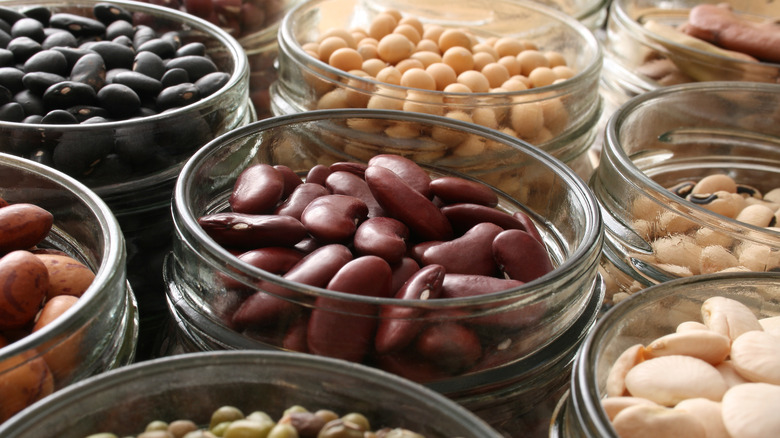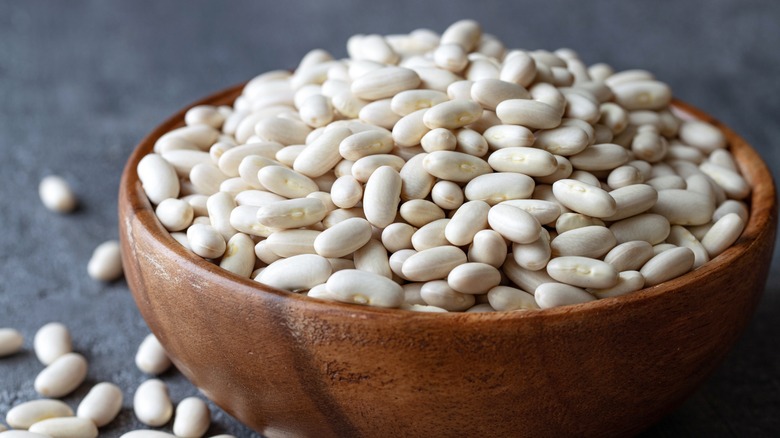Red Flags Your Dried Beans Have Gone Bad
If you typically rely on the convenience of canned beans and have been ignoring all the benefits of dried beans, it's time you made the switch. Dried beans are affordable, more flavorful, versatile, and boast a crazy-long shelf life. And don't believe the myth: You don't have to worry about the inconvenience of soaking dried beans overnight before they're ready to cook. There are other options to speed up the process, like a quick-soak method involving a short boil, a longer cooking time, or even cooking the dried beans in a pressure cooker like an Instant Pot.
All their benefits acknowledged, though, there are a couple of things you need to look out for when cooking with dried beans. While studies have found that dried beans can potentially hang out in your pantry for up to 30 years under the right conditions, most dried beans that you'll buy at the store will stay good for about a year or so. There are several red flags that can tell you when your dried beans are likely bad. These include dark spots or discoloring on beans that typically are a uniform color, or an "off" or rancid smell. Of course, some red flags are redder than others; if you open your bag of dried beans and see weevils, mold, or pest droppings, throw out the entire bag and check the rest of your pantry for further spoilage or infestations.
How to extend the lifespan of your dried beans
If you want to make your dried beans last as long as possible there are a few things you can do. Proper storage is the most important factor. After purchasing dried beans, remove them from the store's plastic bag and transfer them to a food-safe, air-tight container. Tuck the beans into the back of your pantry, away from sunlight, and keep them cool and dry. You can also store dried beans in your freezer, in labeled freezer bags.
If you store your dried beans properly and wait a year, it's very possible that you could find no evidence that they've gone bad. They'll still be safe to eat, but you may find that they require more cooking in order to soften, they don't quite taste the same, and they provide less nutritional value than they might otherwise. Dried beans are, as the name suggests, dehydrated, and they become more dry the longer they sit in your cupboard. Drier beans will take longer to cook. If you've got a bag of older beans that don't smell bad or show any signs of discoloration or mold, you might want not want to skip the extra step of soaking them overnight, as this rehydration will help them to cook more evenly. You can also try adding a pinch of baking soda as you cook them.

